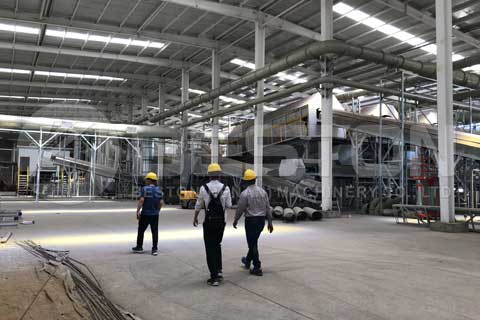The Classification of Solid Waste
Solid waste is a by-product of human activities. It is usually in a useless and unwanted form. It is produced within households, commercial and industrial areas. The classification of solid waste (clasificacion de los desechos solidos) depends on its source including:
1. Municipal Waste
This waste includes waste from streets and markets. Waste such as the leftovers from public markets is regarded as municipal waste. It mainly emanates from residential and commercial areas.
2. Domestic Waste
This waste originates from family setups. It is generated from the activities that transpire within households. Activities such as cooking, repairs, and cleaning generate this waste.
3. Commercial Waste
This waste originates from business premises. Premises such as restaurants, offices, warehouses, retail, and wholesale stores produce commercial waste. Waste from such commercial establishments can be classified as rubbish and garbage.

4. Institutional Waste
This is waste that comes from institutions such as hospitals, universities, colleges, schools, and research facilities. Waste from these institutions can be hazardous. It may lead to contraction of infections. It may also be unsafe for the environment.
5. Ashes
This is residue from combustible materials such as charcoal, wood, and coal. It originates from heating that occurs within households and industries. A fine powder is produced after combustion of these materials.
6. Bulky Wastes
The classification of solid wastes also includes bulky wastes. These are wastes that cannot be accommodated within the confines of a household. They cannot be stored in containers. Wastes such as mattresses, carpets, furniture, and some appliances are considered as bulky wastes. Commercial bulky wastes can include textiles, plastics, equipment, boxes, and cardboard.

7. Street Sweeping
This waste originates from walkways, streets, parks, and alleys. Littering that happens within public places is a major contributor to this waste. It can include plastic bottles, papers, dust, and leaves.
8. Dead Animals
Animals can be killed or die of illness. They can also die naturally. These animals are grouped into either large or small groups. Large animals include cows, sheep, donkeys, and goats. Small animals, on the other hand, include cats, dogs, and rabbits.
Large and small animals require different equipment for their removal. Special equipment has to be used to lift them. These ensure that they do not pose any threat to public health.
9. Construction Waste
This waste is generated from materials used in the construction and demolition of buildings and structures. Repairs and refurbishments of buildings also generate wastes. This waste consists of stones, bricks, wires, cement, metals and roofing materials.
10. Industrial Wastes
Industrial processes generate waste products. Beston Group manufacturing and production plants produced wastes during their operations. These wastes are diverse depending on the industry.
Wates from small plants can be easily dumped within municipal landfills. Thermal power plants generate solid wastes such as coal ash. Other industries such as paper and fertilizer also produce wastes that need to be properly disposed of.
11. Hazardous Wastes
These wastes may originate from institutions, households or industries. They have the potential to harm the environment and humans. Pesticides are examples of such hazardous wastes. These wastes contain chemical, physical or biological characteristics that can severely cause harm.
The classification of solid wastes includes wastes that can cause severe degradation to the environment: https://www.bestongroup.es/planta-de-tratamiento-de-residuos-solidos/. These wastes need to be properly disposed of so that no harm can be inflicted. Pollution is also minimized through proper disposal. Some of these wastes can, however, be recycled or reused instead of being disposed of.